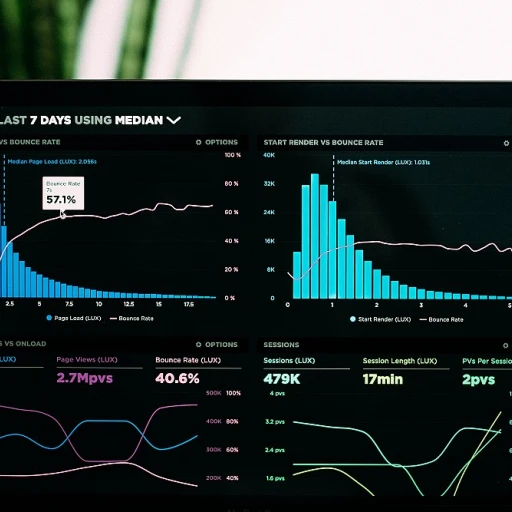
The evolution of Google's search interface
The Shifting Landscape of Google's Search Interface
Google's search interface has undergone significant changes over the years, with a keen focus on enhancing the user experience across both desktop and mobile platforms. Among the most notable updates is the advent of continuous scrolling, which offers a seamless way for users to access more search results without needing to click the ubiquitous "next" button, thereby eliminating the traditional pagination method. With the smartphone boom, there has been a constant push towards optimizing mobile user experiences. Mobile users are particularly inclined towards features that enhance browsing convenience, such as infinite scrolling. This shift not only improves accessibility but also aligns with social media paradigms where users scroll through content endlessly. Google's interface evolution mirrors these user preferences, creating a more engaging search environment. However, continuous scrolling isn't just an aesthetic change or a mere convenience feature. It holds substantial implications for SEO and ad strategies. With ads potentially buried deeper in a stream of content, businesses need to reconsider their strategies to maintain visibility. We'll explore this in depth in the following sections.How continuous scrolling affects ad visibility
Changes in Ad Visibility with Continuous Scrolling
The introduction of continuous scrolling on Google search marks a significant shift from the traditional pagination system. With this new design, users can now access more content at once, especially on mobile devices, which enhances user experience by reducing the need for a "next page" button. However, this shift also presents unique challenges and opportunities for advertisers aiming to optimize their ad visibility.
In a pagination-based system, ads often appeared prominently at the top of each search results page. As a result, they had a predictable load time and placement. With infinite scrolling, however, ads are interspersed within a continuous stream of search results, which changes their visibility dynamics. The scroll load of ads in this system can lead to increased competition among advertisers to capture the attention of users further down the page.
This new format aligns closely with the design paradigms seen on social media platforms, which also use infinite scrolling to keep mobile users engaged. This approach, while engaging, means that advertisers must rethink their strategies to ensure that their ads are viewed amongst an ever-scrolling page of content.
Moreover, the potential for decreased visibility should prompt advertisers to seriously consider diversifying their strategies beyond relying solely on organic methods. As highlighted in this article, understanding the pitfalls of solely relying on organic marketing strategies is crucial in adapting to Google’s new design.
Pros of continuous scrolling for advertisers
Advantages for Advertisers with Endless Scrolling
The shift to continuous scrolling on Google's search platform can offer several benefits for advertisers seeking enhanced visibility and engagement.- Increased User Interaction: Continuous scrolling creates a more seamless user experience, encouraging users to explore more content without the interruption of pagination. This extended browsing can lead to more ad impressions as users scroll continuously.
- Boosting Ad Discoverability: With no need to click a "load button," ads appear as users scroll, leading to a greater chance of new ad content being presented. The removal of pagination allows your ads to be naturally integrated into the user’s journey, enhancing their discoverability.
- Enhanced Mobile Experience: With the increase in mobile users, continuous scrolling caters to mobile device behavior, providing an infinite web design that mirrors social media feed navigation. This can potentially lead to higher engagement rates as mobile users prefer easier, more fluid browsing.
Cons of continuous scrolling for advertisers
Challenges of Continuous Scrolling for Advertisers
While continuous scrolling on Google search can enhance user experience by eliminating the need for pagination, it presents several challenges for advertisers. Understanding these cons is crucial for adapting ad strategies effectively.
One significant issue is the potential decrease in ad visibility. With infinite scrolling, users are less likely to reach the bottom of the page where ads are traditionally placed. This can lead to lower click-through rates, as users may not scroll far enough to see the ads. Advertisers need to rethink their placement strategies to ensure their ads are seen.
Another challenge is the impact on ad performance metrics. Continuous scrolling can affect how ads are measured, particularly in terms of impressions and engagement. As users scroll through content more fluidly, distinguishing between genuine engagement and passive scrolling becomes difficult, complicating the assessment of ad effectiveness.
Moreover, the design and load time of ads become more critical. With users expecting seamless experiences on mobile devices, ads that disrupt the flow or increase load time can lead to negative user experiences. Advertisers must ensure that their ads are optimized for quick loading and do not interfere with the user's journey.
Finally, the shift to continuous scrolling demands a reevaluation of ad budgets. As the traditional metrics of ad performance shift, advertisers may need to allocate resources differently to maintain or improve their return on investment.
Leveraging AI for optimizing ad strategies
Utilizing AI for Enhanced Ad Performance
Artificial intelligence has become an invaluable tool for advertisers looking to optimize their ad strategies in the ever-evolving landscape of search engines. With Google's continuous scrolling reshaping how users interact with search results, AI brings a plethora of opportunities to refine ad placement and effectiveness. AI technologies can analyze vast amounts of data, enabling advertisers to understand user behavior patterns in real-time. With continuous scrolling, the way users scroll through content without clicking a traditional pagination button alters their experience and engagement levels. AI-driven algorithms can identify these subtle changes in user interaction, providing insights that can be used to optimize ad placement dynamically. Moreover, as AI becomes more integrated into SEO strategies, it helps in predicting the right keywords and optimizing ad copy that resonates with what users are searching for. AI tools are capable of analyzing competing ads, load times, and user behavior to suggest the best design and content adjustments. This continuous feedback loop helps enhance the effectiveness of ads, ensuring they catch user attention even with the constant flow of an infinite scrolling interface. Incorporating AI into ad strategies also involves leveraging machine learning to automate bidding strategies, ensuring that budgets are spent efficiently across different demographics and user segments. With mobile users increasingly accessing sites through their devices, mobile-focused AI enhancements can tailor ads to optimize for mobile experiences, further increasing their visibility and click-through rates. As search engines, including Google, adapt to the changing behaviors of users and continuous innovations like infinite scroll, AI will remain a critical component in crafting adaptive and successful ad strategies. The future of SEO is intricately linked with AI, offering advertisers more precise tools and insights to keep up with the fast-paced changes in search technology and user preferences.Future trends in search engine optimization with AI
Future Directions: AI in Search Engine Optimization
In the ever-evolving landscape of search engine optimization, the incorporation of artificial intelligence is beginning to redefine strategies through dynamic interactions with platforms like Google, especially with changes such as continuous scrolling. This change, which allows users to scroll infinitely instead of clicking through pagination, demands new approaches for both content and ad strategies.
AI can fine-tune ad placements and visibility by analyzing user behavior across different devices, particularly mobile ones where continuous scrolling is prevalent. Such processes help in maximizing both the impact and relevance of ads on users' screens, by considering factors like load time and user experience. The intricate algorithms AI employs can discern subtle shifts in user engagement due to scroll load patterns, continuously adapting the display strategies based on real-time data.
Another promising trend is AI-assisted web design for SEO purposes. With Google search pushing towards better user experiences, creating adaptive site designs that prioritize efficient loading times and visibility becomes crucial. AI can automate testing to enhance mobile users' experiences, ensuring website components respond fluidly to infinite scrolling dynamics without compromising speed or clarity.
As search engines like Google continue to evolve, integrating AI with SEO will likely become less about procedural tasks and more about fostering interactions that enhance user satisfaction. Continual enhancements in AI will allow search engine strategies to adapt more seamlessly to changes in interface, such as Google's continuous scroll format.













